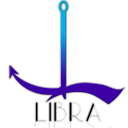Middle East and Africa Chiller Market Expected to Grow With a CAGR of 3.6% During the Forecast Period, 2019-2024 - ResearchAndMarkets.com
The "Middle East and Africa Chiller Market Research Report: By Type, End-User, Regional Insight - Industry Trend and Growth Forecast to 2024" report has been added to ResearchAndMarkets.com's offering.
During 2014-15, MEA market registered a fall in the revenue owing to slump in oil prices, which led to a drop in the revenue generated by the oil and gas sector in the region. But, various factors, such as upcoming events scheduled during the forecast period, including, FIFA World Cup 2022, Dubai Expo 2020, and Africa Confederation Cup 2019, are expected to revive the market. These events are leading to the increasing construction of new stadiums and hotels, which, in turn, is resulting in the growth of the chiller market in MEA. On the basis of type, the market is categorized into screw, scroll, reciprocating, centrifugal, and absorption chillers.
Out of these, in 2018, the screw category held the largest share in the market. The screw chiller category is further bifurcated into water-cooled and air-cooled, of which the water-cooled bifurcation dominated the market in terms of revenue in 2018. This is attributed to the fact that these chillers are mostly preferred when the consumption of power is over 5 MW. However, the air-cooled division led the market in terms of volume. Based on end-user, the MEA chiller market is classified into industrial, residential, and commercial.
Out of these, in 2018, the commercial classification contributed the highest revenue to the market. The commercial classification is further divided into hospitality, offices and buildings, healthcare, transportation, supermarket/hypermarket, and government. Among these, the transportation division is predicted to witness the fastest growth in the MEA chiller market during the 2019-2024 period. This is ascribed to the ongoing and upcoming metro projects in Saudi Arabia, Nigeria, Egypt, Qatar, U.A.E., and Israel. In Saudi Arabia, there are three projects that are under construction in Riyadh and Jeddah.
As compared to air conditioning systems, the inverter technology in chillers is more efficient. An inverter helps in the adjustment of the power operation automatically depending upon the actual amount required, which does away with the on/off feature of traditional systems. As a result, it lowers the energy bill by up to 50.0%. It offers several other benefits, such as quick cooling, longer life, stable temperature, and no sound disturbance. The nation is continuously aiming at the use of energy-efficient heating and cooling solutions. These factors are expected to boost the MEA chiller market growth during the forecast period.
Key Topics Covered:
Chapter 1. Research Background
1.1 Research Objectives
1.2 Market Definition
1.3 Research Scope
1.3.1 Market Segmentation by Type
1.3.2 Market Segmentation by End-User
1.3.3 Market Segmentation by Country
1.3.4 Analysis Period
1.3.5 Market Data Reporting Unit
1.3.5.1 Value
1.4 Key Stakeholders
Chapter 2. Research Methodology
2.1 Secondary Research
2.2 Primary Research
2.2.1 Breakdown of Primary Research Respondents
2.2.1.1 By country
2.2.1.2 By industry participant
2.2.1.3 By company type
2.3 Market Size Estimation
2.4 Data Triangulation
2.5 Assumptions for the Study
Chapter 3. Executive Summary
Chapter 4. Introduction
4.1 Definition of Market Segments
4.1.1 By Type
4.1.1.1 Screw
4.1.1.2 Centrifugal
4.1.1.3 Scroll
4.1.1.4 Absorption
4.1.1.4.1 Direct-fired
4.1.1.4.2 Hot water
4.1.1.4.3 Steam
4.1.1.5 Reciprocating
4.1.1.6 Air-cooled
4.1.1.7 Water-cooled
4.1.2 By End-User
4.1.2.1 Commercial
4.1.2.1.1 Hospitality
4.1.2.1.2 Transportation
4.1.2.1.3 Offices and buildings
4.1.2.1.4 Supermarket/Hypermarket
4.1.2.1.5 Healthcare
4.1.2.1.6 Government
4.1.2.1.7 Others
4.1.2.2 Industrial
4.1.2.2.1 Oil & gas
4.1.2.2.2 Food & beverage
4.1.2.2.3 Energy and utilities
4.1.2.2.4 Pharmaceutical
4.1.2.2.5 Automotive
4.1.2.2.6 Others
4.1.2.3 Residential
4.2 Value Chain Analysis
4.3 Market Dynamics
4.3.1 Trends
4.3.1.1 Preference toward smart connected chillers
4.3.1.2 Inclination toward magnetic bearing chillers
4.3.2 Drivers
4.3.2.1 Growing construction industry
4.3.2.2 Adoption toward district cooling system
4.3.2.3 Impact analysis of drivers on market forecast
4.3.3 Restraints
4.3.3.1 Growing demand for variable refrigerant flow (VRF) system
4.3.3.2 Impact analysis of restraints on market forecast
4.3.4 Opportunities
4.3.4.1 Demand for solar powered absorption chillers
4.3.4.2 Surging demand for inverter-based chillers
4.4 Porter's Five Forces Analysis
Chapter 5. MEA Market Size and Forecast
5.1 By Type
5.1.1 Screw Chiller, by Type
5.1.2 Scroll Chiller, by Type
5.1.3 Reciprocating Chiller, by Type
5.1.4 Absorption Chiller, by Type
5.2 By End-User
5.2.1 Commercial Chiller Market, by Application
5.2.2 Industrial Chiller Market, by Application
5.3 By Country
Chapter 6. Competitive Landscape
6.1 List of Key Players and Their Offerings
6.2 Ranking of Key Players
6.3 Competitive Benchmarking of Key Players
6.4 Recent Activities of Major Players
6.5 Strategic Developments of Key Players
6.5.1 Product Launches
6.5.2 Facility Expansions
6.5.3 Client Wins
Chapter 7. Company Profiles
7.1 Johnson Controls International Plc
7.2 Ingersoll-Rand plc
7.3 United Technologies Corporation
7.4 Daikin Industries Ltd.
7.5 S.K.M Air Conditioning LLC
7.6 Petra Engineering Industries Co.
7.7 Zamil Air Conditioners
7.8 Mitsubishi Electric Corporation
7.9 Midea Group Co. Ltd.
7.10 GAMI Air Conditioners Manufacturing Company L.L.C.
For more information about this report visit https://www.researchandmarkets.com/r/jc0la5
View source version on businesswire.com: https://www.businesswire.com/news/home/20190816005093/en/




